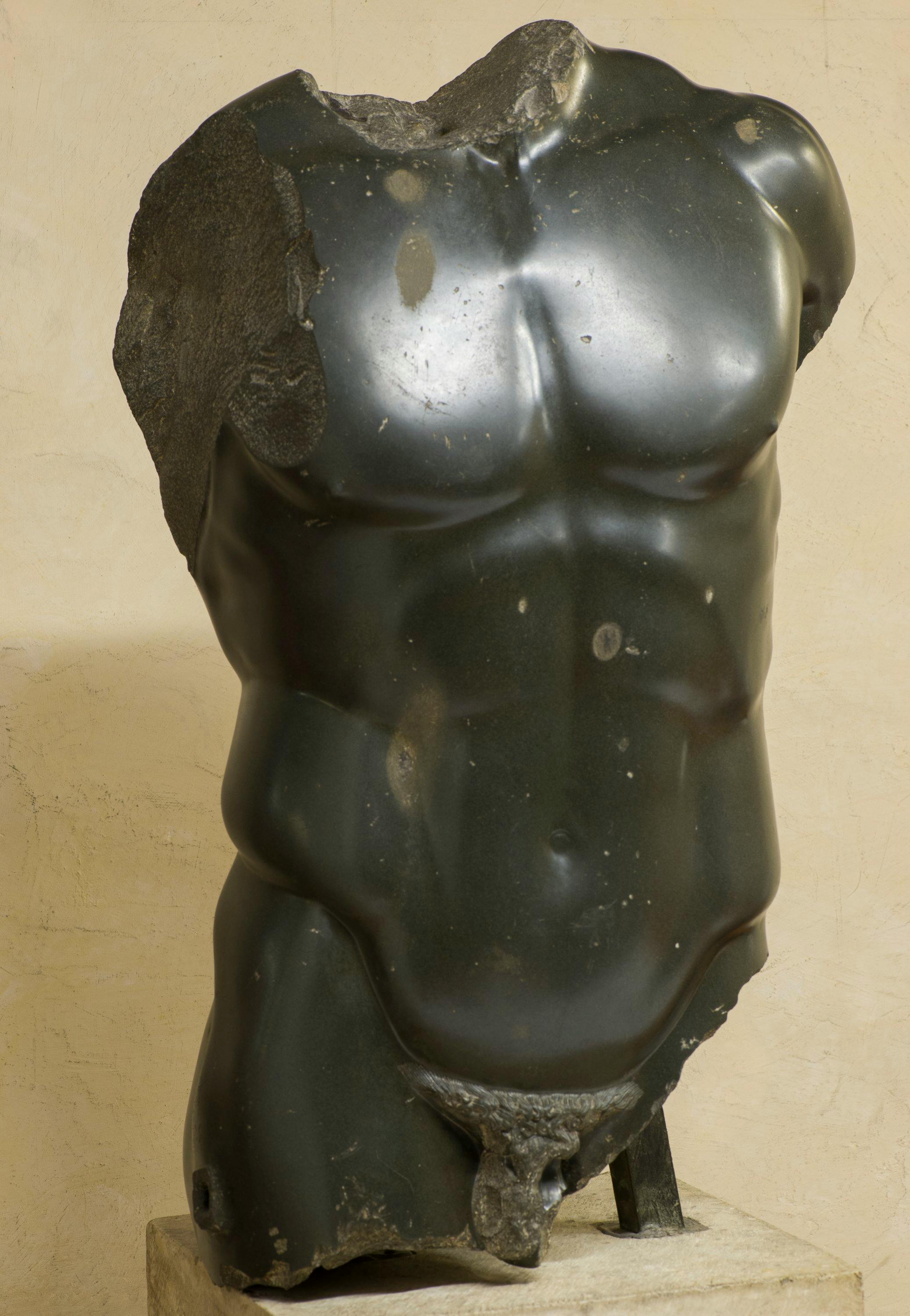Doryphoros torso
Roman art
The torso on display in Florence is considered one of the best-executed, most faithful copies of the Doryphoros of Polykleitos, masterpiece of Greek sculpture from the second half of the 5th century B.C. and now only known through copies in marble. With a rare sensitivity, the example in the Uffizi portrays the restrained power of the muscles and the minutely detailed anatomical reproduction of the original, making it a prestigious work of absolute elegance. A vast part of Polyleitos’ fame was due to the fact that with his Doryphoros and Diadumenos - another of his works - he solved the problem of the ideal representation of the athletic male figure, standing and revolving. The polished surface of the basanite emphasises the lines of the body’s contours, highlighting a lean and elegantly muscular physique. In spite of the extraordinary hardness that made it extremely hard to work with, this particular type of stone from the eastern desert of Egypt, was quite popular for use in statuary during the first period of imperial Rome. Its burnished colour made it a popular choice in the reproduction of famous bronze masterpieces from the classic period and it was therefore used to create statues of rare perfection and quality, which, due to their extremely high cost, were destined only to the highest-ranking patrons of the period
A. Cecchi – C. Gasparri, La Villa Médicis. Le collezioni del cardinale Ferdinando. I dipinti e le sculture, Roma 2009, pp. 266-267, n.378.

